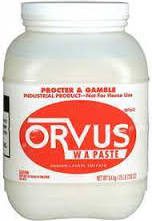Do you have glass or ceramic pieces that you collect or have been passed down in your family?
In this post, we’ll be covering how to care for and properly clean glass and ceramics.
If you’ve followed the posts on cleaning wood and metal, you’ll know that we dust and use our trusty natural bristle brushes to remove surface dirt and dust. The same gentle dusting can be done using these brushes for glass and ceramic objects – always working from the top down and using caution to avoid letting any metal part of the brush scrape the surface of the object.
For glass objects, it’s important to avoid submerging them in water or cleaning with a dishwasher. Instead, mix a solution of distilled water and Orvus paste and apply using 100% cotton balls or pads over the surface of the glass. You may “rinse” with a clean cotton pad soaked with distilled water, and dry with a lint-free cloth. If your glass object has paint or gilded elements, it is best to spot clean using a cotton swab to avoid these areas; paint and gilding can easily chip or flake off. Mirrored glass can be cleaned using a mixture of distilled water and isopropyl alcohol (also known as rubbing alcohol), but try not to let any of this liquid come into contact with a wood or metal frame that may hold the mirror.
As with glass, do not put historic ceramics into a dishwasher. Always check for previous repairs (such as a handle that has been re-glued) as these tend to be the weakest point on an object. Ceramic objects collect dust easily, and you may find that using a plain microfiber dust cloth or natural bristle brush is enough to refresh the piece you are cleaning.
Glazed ceramics can be cleaned in a similar fashion to glass as outlined above, with a simple solution of Orvus paste and distilled water. If the glaze is cracked or rough, use caution with cotton cloths to avoid snagging the cotton. Unglazed ceramics should not be cleaned using any sort of water or liquid, as the moisture can seep into the pores of the piece.

Orvus paste is made by Proctor & Gamble and is available for purchase at many fabric stores and online retailers. Distilled water can be found in any major retailer or grocery store with the bottled gallons of water.
Many objects that people and museums collect have a variety of materials used – one piece may have ceramic, metal, and textile elements. Feel free to refer back to our previous Historic Housekeeping posts for tips and tricks on how to safely clean and help preserve these other material types.
Are there cleaning techniques you’d like to learn more about? Let us know in the comments and we’ll be sure to help find the answers you need!